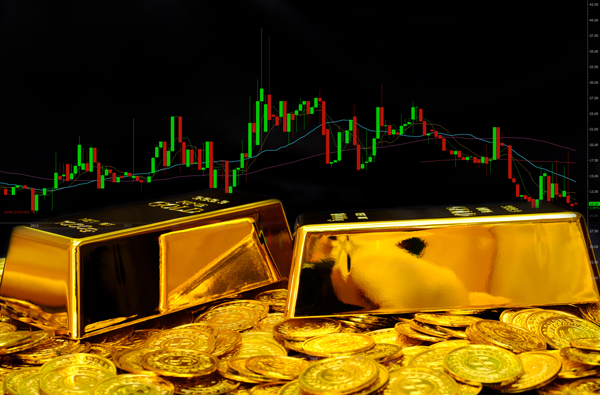Gold prices are facing significant pressure as the US dollar strengthens. The dollar hit a four-month high, partly due to market reactions to former President Donald Trump’s political influence. This has made gold, priced in dollars, less attractive to investors.
Precious metals, including gold, are under strain as safe-haven flows decline. Investor optimism is growing, which is reducing the demand for gold. As a non-yielding asset, gold struggles when market sentiment turns positive, especially with US Treasury yields climbing to their highest levels since July.
Trump’s Influence and Market Optimism

Gold’s recent struggles are linked to a shift in market dynamics. Investors had expected a contentious US election result, but Trump’s victory created clarity, reducing demand for gold as a safe-haven asset. This optimism has pushed investors away from traditional defensive assets like gold.
The market also focuses on the upcoming US Federal Reserve (Fed) policy decision. On Thursday, the Fed is expected to announce a 25-basis-point rate cut. If this happens, gold could receive some support. Lower interest rates reduce the opportunity cost of holding non-interest-bearing assets like gold.
The CME FedWatch Tool shows a 98.1% chance that the Fed will cut rates this month. A rate cut could reduce bond yields, making gold more appealing.
Gold prices Rising Yields and Inflation Concerns
On Wednesday, gold prices continued to face downward pressure as US Treasury yields surged. The 2-year bond yield rose to 4.31%, while the 10-year yield reached 4.47%. Higher yields make gold less attractive since investors can earn more from government bonds.

However, Trump’s economic policies could eventually boost gold. His plan to raise tariffs and increase government spending may drive inflation. If inflation rises, gold could benefit as investors seek safe-haven assets to protect their wealth.
Trump’s policies could also create tension with the Fed’s efforts to control inflation. This could lead the central bank to take a more cautious approach to interest rate cuts, further supporting gold in the long term.
Read more: How did Donald Trump Break the “Blue Wall” again?
Gold Prices and Global Tensions
Despite rising tensions, such as the ongoing conflict between Israel and Iran, gold has not seen significant safe-haven buying. While there are concerns about Iran’s plans for retaliation after Israel’s attacks in October, these geopolitical risks have not yet caused a significant surge in gold prices.
Economic Data and Gold’s Outlook
In addition to political and geopolitical factors, economic data is also influencing gold prices. The US ISM Services PMI rose to 56.0 in October, surpassing expectations. This suggests that the economy is performing well, which could further limit gold’s appeal as an investment.
Technical Analysis: Gold Faces Bearish Bias
On Thursday, gold traded near $2,650 per ounce. Technical analysis suggests the bearish trend may continue. The price is below the nine- and 14-day Exponential Moving Averages (EMAs), indicating a negative short-term outlook.
The 14-day Relative Strength Index (RSI) is below 50, confirming the bearish sentiment. If gold falls below $2,603.53, it could test a three-week low. A break below this level might push the price toward the psychological support level of $2,500.
On the upside, resistance is seen around the $2,700 level. A break above $2,711.40, the nine-day EMA, could push gold toward its all-time high of $2,790.11, recorded on October 31.
Why Invest people in Gold?

Gold has long been a safe-haven asset. It is valued for stability and is seen as a hedge against inflation. Gold does not rely on any government or currency, making it a reliable store of value, especially during uncertain times. Investors often turn to gold to protect against economic volatility and currency depreciation.
Despite current challenges, gold remains a key asset in many portfolios, particularly those seeking a hedge against market uncertainties.














